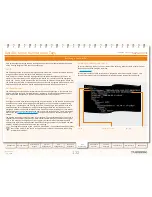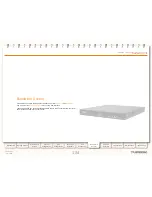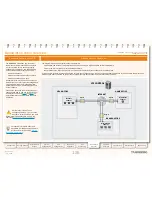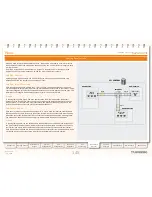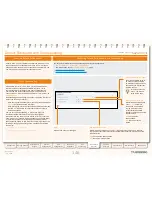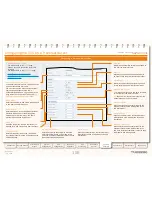
145
D14049.04
JULY 2008
Grey Headline
(continued)
TANDBERG
VIDEO COMMUNICATIONS SERVER
ADMINISTRATOR GUIDE
Introduction
Getting Started
Overview and
Status
System
Configuration
VCS
Configuration
Zones and
Neighbors
Call
Processing
Bandwidth
Control
Firewall
Traversal
Appendices
Applications
Maintenance
Pipes
Pipes are used to restrict the bandwidth of a link. When a pipe is applied to a link, it will restrict
the bandwidth of calls made between the two nodes of the link - the restrictions will apply to calls
in either direction.
Normally a single pipe would be applied to a single link. However, one or more pipes may be
applied to one or more links, depending on how you wish to model your network.
One Pipe, One Link
Applying a single pipe to a single link is useful when you wish to apply specific limits to calls
between a subzone and another specific subzone or zone.
One Pipe, Two or More Links
Each pipe may be applied to multiple links. This is used to model the situation where one site
communicates with several other sites over the same broadband connection to the Internet. A pipe
should be configured to represent the broadband connection, and then applied to all the links. This
will allow you to configure the bandwidth options for calls in and out of that site.
Example
In the diagram opposite, Pipe A has been applied to two links: the link between the Default
Subzone and the Home Office subzone, and the link between the Default Subzone and the Head
Office subzone. In this case, Pipe A represents the Head Office’s broadband connection to the
internet, and would have total and per-call restrictions placed on it.
Two Pipes, One Link
Each link may have up to two pipes associated with it. This is used to model the situation where
the two nodes of a link are not directly connected, for example two sites that each have their own
broadband connection to the Internet. Each connection should have its own pipe, meaning that a
link between the two nodes should be subject to the bandwidth restrictions of both pipes.
Example
In the diagram opposite, the link between the Default Subzone and the Home Office Subzone has
two pipes associated with it: Pipe A, which represents the Head Office’s broadband connection to
the internet, and Pipe B, which represents the Home Office’s dial-up connection to the internet.
Each pipe would have bandwidth restrictions placed on it to represent its maximum capacity, and a
call placed via this link would have the lower of the two bandwidth restrictions applied.
Applying Pipes to Links
HEAD OFFICE
VCS CONTROL
HOME OFFICE
BRANCH OFFICE
Branch Office
Subzone
Default
Subzone
Pipe A
Pipe B
Pipe C
Home Office
Subzone
INTERNET


